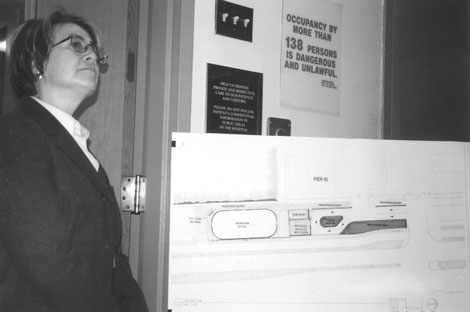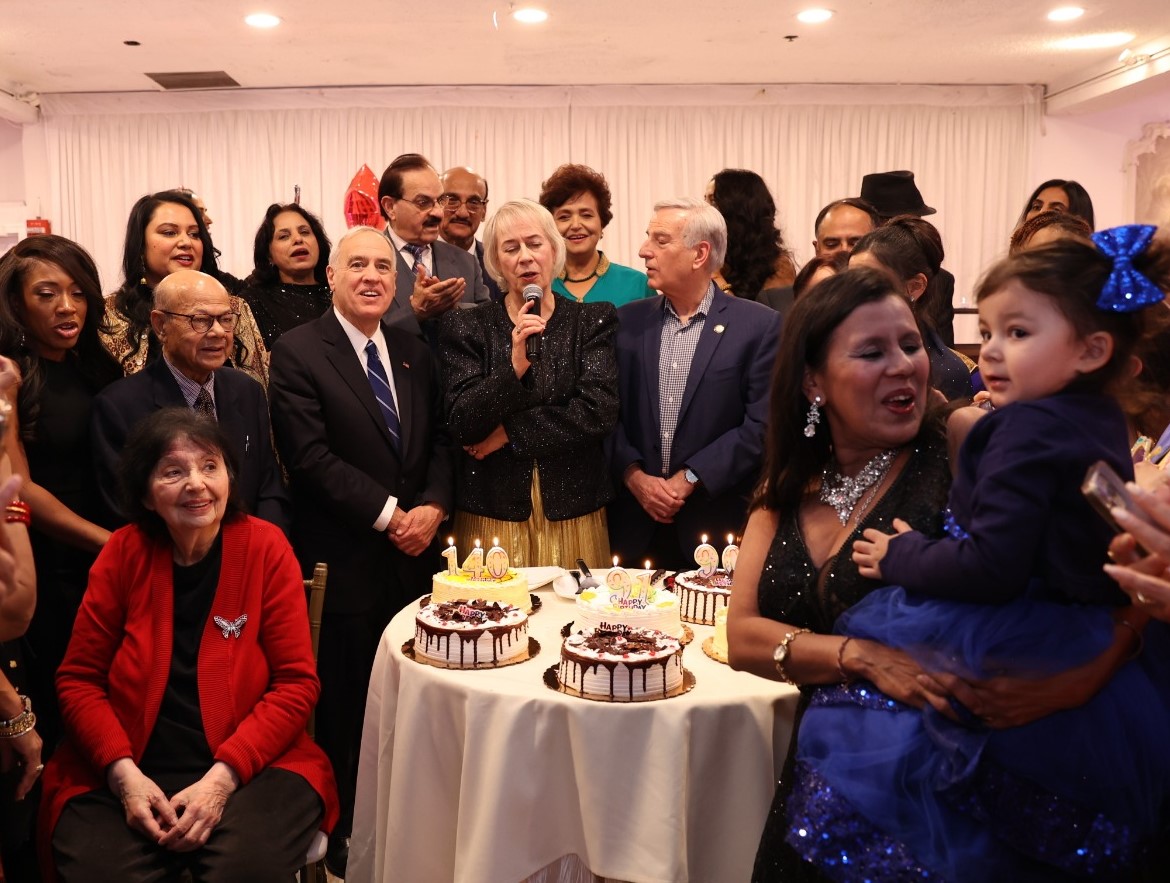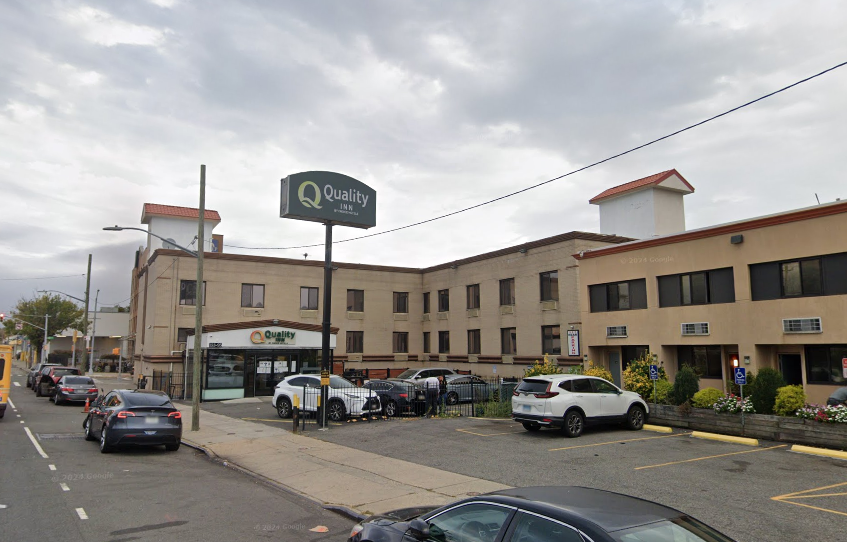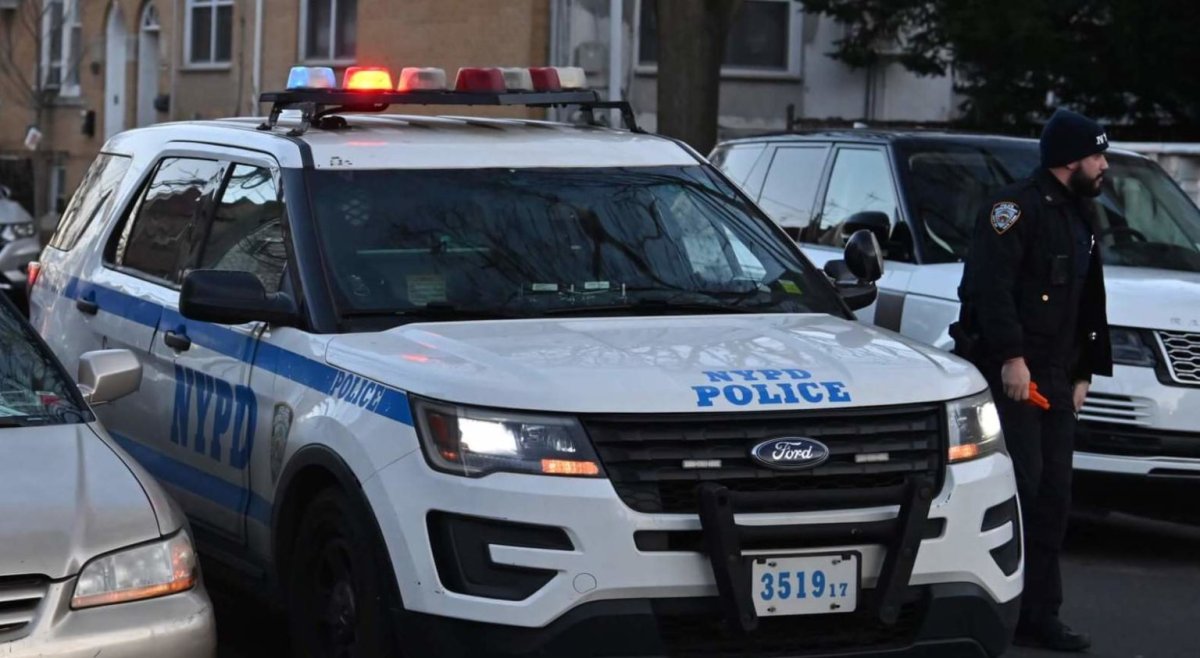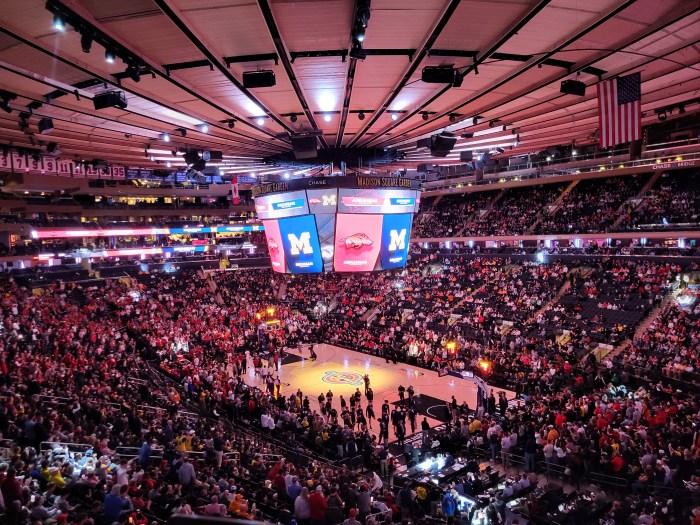By Lincoln Anderson
To use a hockey analogy, Assemblymember Deborah Glick took the gloves off at last Thursday night’s Community Board 2 full board meeting. She came out swinging at a plan by the Hudson River Park Trust to build a $2.3 million ice-skating rink in the park at Spring St.
“I am deeply, deeply troubled by the process — or lack of process — about the skating rink,” Glick told the board members prior to the vote, calling it a “fast-track process” and “rushed through in a process that is mind-boggling.”
One could say Glick played the enforcer’s role. Her power play may have helped sway some of the board’s members, resulting in the full board overturning the resolution of its waterfront committee and instead passing an alternate resolution supporting exploring putting an ice-skating rink in or on Pier 40, just north of the proposed site.
The board voted 18 for and 15 against, with one abstention, for the alternate resolution, written by board members Elizabeth Gilmore, Honi Klein and Shirley Secunda.
Nevertheless, the Trust has already fenced off an expansive area and posted construction signs where the rink is planned.
The Trust’s board of directors had been about to vote on the rink on Oct. 9, but pressure from Glick and others persuaded the Trust to postpone its decision. Subsequently, the Trust reached out to C.B. 2’s waterfront committee to hold a public hearing on the rink on Oct. 20, after which the committee approved the rink by a vote of 7-2.
However, prior to its resolution being thrown out by the board, Glick said of the board’s waterfront committee — assembled by past C.B. 2 chairperson Aubrey Lees after a contentious purge of the committee last winter: “all good people — but maybe they haven’t had the institutional memory of what has gone on on the waterfront over the years.”
One of Glick’s biggest concerns is that the rink, to be shoehorned between the park’s esplanade and bikeway, will actually spread into the esplanade, narrowing it from 30 ft. to only 12 ft.
To decrease the width “when we already have too many people and not enough space on that promenade is shocking,” Glick said.
Other park activists like Al Butzel, executive director of Friends of Hudson River Park, are also distressed at the potential of the esplanade’s being slimmed, fearing it would be a “bottleneck.”
Instead, Glick suggested it might be appropriate to put the rink on Pier 40.
The board’s alternate resolution additionally noted that the majority of the audience members present at the Oct. 20 committee public hearing were against the rink and that music for the rink “would be a public nuisance at the proposed location, but would be appropriate at Pier 40” and recommended more study about the rink’s operating costs and admission fee structure.
Glick urged the board not to abdicate its review role under the Hudson River Park Act, which requires a 30-day notice and public hearing when a significant change is proposed for the park: “We have damn little protection in that legislation, which is why I was against the legislation,” the assemblymember said. “Demand that the process be adhered to — or it will come back and bite you. If this board doesn’t hold [the Trust] to the process on this particular facility — shame on you, because I told you,” she warned.
Speaking on Monday, Glick said of the Trust, “They are acting like a renegade agency at this point.”
Bill Hine, a public member of the board’s waterfront committee, said he was “very much for [the rink] but it’s in the wrong place.”
“Why here?” asked board member Jo Hamilton, of the Spring St. site, noting that when the park was designed, commercial activities were supposed to be on Pier 40 and other “commercial nodes,” like Chelsea Piers, while the rest of the park was to be open public space.
However, Connie Fishman, the Trust’s vice president, who attended the meeting with Chris Martin, the Trust’s spokesperson, responded that the rink will be a “money-losing operation” and so not really a commercial activity.
“So that’s how you’re getting around it,” Hamilton said.
Fishman said they are looking at other public ice-skating rinks, like the one at Riverbank State Park in Harlem, which charges low fees, around $4.50 or $5.50, to get ideas for pricing. But others questioned the logic of adding something that will drain revenue from a park supposed to be financially self-supporting.
Fishman also said geotechnical testing has proven that not all areas are suited for what was originally planned, forcing the Trust sometimes to switch a spot that was designated for passive recreation to active recreation or vice-a-versa.
According to Butzel, the park’s master plan design guidelines from 1997 call for passive recreation at the proposed rink site.
As to how the rink, originally planned for Pier 25 at N. Moore St. in Tribeca in Community Board 1, ended up north of Canal St. in Community Board 2, Fishman said it was because there aren’t many sections of the park in Tribeca wide enough for such a large rink or with an adequate electricity supply nearby.
The project just “crept north,” Fishman said. In September, the Trust presented the plan to Board 1 for review, having in Fishman’s words, “spaced out,” forgetting the site was in Board 2.
Fishman said that the process with the Lower Manhattan Development Corp., which is funding the $2.3 million project, was “very expedited.”
Another issue was the unesthetic chain-link fence encircling the rink in the Trust’s design. Fishman said they are looking into whether the facility would be safe at night without a fence.
Fishman said the Trust would start out operating the rink, see how it goes and then decide whether to bring in an outside operator. In the summer, a different surface could be put down to allow roller-skating, volleyball or basketball, she said.
Fishman said the rink would be completed for this winter’s skating season. But Klein, who was at Monday’s committee meeting, noted that Martin and Mark Boddewyn, the Trust’s vice president for design and construction, had said then that the work would start in November and finish in March, leaving just one month for ice-skating.
“Why the rush to build this, when it seems like there are a lot of outstanding issues that the community wants to address?” agreed board member Brad Hoylman. He said the board should respect Glick’s plea to oppose the plan, noting, “An assemblymember rarely has made as impassioned a speech as we heard tonight.”
However, Sean Sweeney, a board member from Soho, was glad the L.M.D.C. wants to allocate funds in Board 2.
“It’s kind of nice to see the L.M.D.C. giving some money north of Canal St. for once,” Sweeney said. “If we don’t use this money now, we’ll lose it. We’re looking a gift horse in the mouth.”
The following day in a telephone interview, Glick elaborated on the idea of putting the rink, or possibly more field space, on Pier 40. Since the L.M.D.C. funding zone extends up to Houston St., Glick pointed out, the $2.3 million for the rink could be used on the half of Pier 40 that lies south of Houston St.
Tobi Bergman, president of Pier Park & Playground Association, supported the rink at the Spring St. site.
Afterwards, Chad Marlow explained why he couldn’t make up his mind and abstained: “Huge upsides for kids; huge downsides for park.”
Speaking Monday, Lees said of Glick’s diatribe, “I think it was ridiculous. What’s wrong with a little rink on the waterfront? I was disappointed for the kids of the neighborhood — who could establish an ice-hockey league. Now it’ll probably be withdrawn because they don’t want to deal with the nuts on Community Board 2.”
The park’s Segment 3 in Community Board 1’s Tribeca contains several recently added recreational uses, including a skateboard park, batting cages and trapeze school. However, these are all interim uses, unlike the ice-skating rink in Board 2, which is being proposed as permanent.
“I think it’s a much bigger issue when it’s permanent,” said Julie Nadel, a board of directors member on the Trust. “It ratchets up the stakes 10 times.”
Nadel said she was concerned about what she termed the vagueness of the Trust’s business plan for the rink.
“I could see this being a big money drain on the Trust,” she said. “I think it’s going to be expensive to run. I don’t know if you’re going to get enough people there.”
Martin did not respond to e-mail or phone queries as to whether the Trust plans to go ahead with the project now that Board 2 has voted against it.
Following Board 2’s vote, the Hudson River Park Advisory Council was set to vote on the ice rink at its meeting Tuesday night.
Nadel said she thought the Trust board’s decision will be influenced by what the Advisory Council does.
Asked on Monday if she thought the Trust should respect Board 2’s vote and delay construction of the rink or consider putting it on Pier 40, Madelyn Wils, a Trust board of directors member and chairperson of Community Board 1, said, “I know it was a very close vote. The board was basically split. Certainly the Trust has to listen to the board. But this was not an overwhelming vote.”
Told that Glick thinks the funds could be used on Pier 40, Wils said, “I’m not going to get into that conversation. If that’s what she says, that’s what she says.”
Also, Wils said, if the Trust is going to put out a new request for expressions of interest for private developers for Pier 40, it doesn’t make sense to spend a lot to expand interim uses on the pier.
Wils said she personally doesn’t have strong feelings about whether the money should be used to build a rink, but said, “The idea of doing this was to get something the people could use. It was something that was discussed last year as a small rink by Stuyvesant High School. It got moved. It got bigger. How it got to be what it is, I can’t really say. It was originally a Board 1 project. It was to give something to the kids in Lower Manhattan who had suffered so much — lest we forget. A lot of people forget — we still have a 16-acre hole. We’re still working our way towards rebuilding.”
Wils said when the rink was first proposed a year ago at Pier 25, its price tag was only $350,000 and it was an interim use.
State Senator Martin Connor, whose district also contains the pier, like Glick, said Board 2’s vote should be respected. “I’ve been troubled by the skating rink from day one, because it sounds like an amenity, but I wonder how viable it is,” Connor said. “There once was a skating rink at the World Trade Center but it went bust. And then to hear it was a permanent structure. I agree with the community board.
“Process-wise, it was kind of offensive that they didn’t run it by the right community board,” Connor said.
On a related park issue, restarting the Pier 40 development process, Trust spokeperson Martin denied the claim of Friends of Hudson River Park that Douglas Durst, the Friends’ co-chairperson, met with Trip Dorkey, the Trust’s board chairperson, at the end of last month and that Dorkey at that time agreed that if the Friends dropped their threatened lawsuit against the Trust over the Trust’s failure to pick a developer in June for Pier 40, the Trust would restart the Pier 40 process fairly soon, possibly as early as January.
“There was no meeting that I’m aware of,” said Martin. “I can’t speak for the Friends, but I’m not aware of any agreement we’ve made with the Friends. Right now, we’re investigating interim uses for Pier 40.” Asked when the Trust will reissue a request for the pier’s full-scale redevelopment, Martin said economic conditions will be “a main driving factor.”



